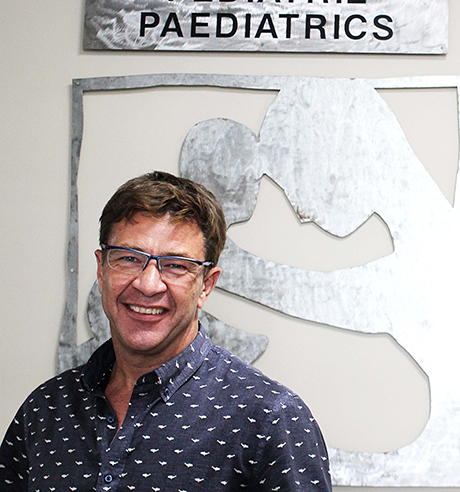13 September 2022
|
Story Prof Jan du Plessis and André Damons
|
Photo Istock
 Prof Jan du Plessis is the Head of the Paediatric Oncology Unit at the University of the Free State (UFS).
Prof Jan du Plessis is the Head of the Paediatric Oncology Unit at the University of the Free State (UFS).
A post on Facebook by a bereaved parent of a young child who tragically died of cancer that reads: “I want my old life back, the one with my child in it”, is unfortunately still the sad reality that many families face, even though in developed countries the overall survival rate for childhood cancer is now over 80%. For some types of cancer and in developing countries such as South Africa, the rate is much lower. There are some childhood cancers for which there is no treatment and which are uniformly fatal.
Another harsh reality, according to Prof Jan du Plessis, Head of the
Paediatric Oncology Unit at the University of the Free State (UFS), is that some of those who do survive cancer can go on to suffer long-term (sometimes life-long) health issues as a result of their treatment. Almost all cancer treatments used in children today were actually developed for adults. Most of these treatments (such as chemotherapy or radiotherapy) target all fast-growing cells (not just cancer cells), and this leads to harsh side-effects in young, growing bodies.
Prof du Plessis says the need for more effective and safer treatments for children is urgent. Despite better outcomes for children diagnosed with cancer, some do not survive. Currently, between 800 to a 1 000 South African children are diagnosed with cancer annually. However, it’s estimated that half of the children with cancer in South Africa are never diagnosed, according to the
Cancer Association of South Africa (CANSA).
Different types of Childhood Cancer
Children can get many different types of cancer. Some of the most common childhood cancers are:
• Leukaemia – cancer of the blood and bone marrow, which is the most common childhood cancer.
• Brain cancer – cancer that grows in the brain which is the second most common childhood cancer. It kills more children than any other type of cancer.
• Neuroblastoma & Nephroblastoma – the most common solid tumours diagnosed in children under the age of five.
• Sarcoma – a cancer that grows in the bones and connective tissues of the body.
• Lymphoma – cancer that develops in the lymphatic system.
St Siluan Warning Signs of Childhood Cancer:
“It is not possible to prevent cancer in children, but significant improvements can be made in their lives by detecting cancer early and avoiding delays in care. A correct diagnosis is important to treat children with cancer because each cancer involves a specific treatment regimen that may include surgery, radiotherapy, and chemotherapy.
“To improve early diagnosis we try to educate the public/students on the early warning signs of childhood cancer. We use the St Siluan Warning Signs for Childhood Cancer,” explains Prof Du Plessis.
• S – Seek medical help early for ongoing symptoms
• I – White spot in the eye, new squint, sudden blindness or bulging eyeball
• L – Lump on the stomach, pelvis, head, arms, legs, testicle or glands
• U – Unexplained fever present for more than two weeks, weight loss, fatigue, pale appearance, easy bruising and bleeding
• A – Aching bones, joints, back and easy fractures
• N – Neurological signs, a change in walk, balance or speech, regression, continuous headaches with / without vomiting and enlarged head
According Prof du Plessis, his hope is to diagnose these kids early, the earlier they are diagnosed, the less treatment they are exposed. It is amazing to witness how the cancer kids adapt to their new normal and reality, says Prof Du Plessis.
“They play soccer in the corridor, not in the park. One in fact learnt to walk in the hospital. Nurses and doctors become their new family. Their joy, strength and resilience is remarkable. Their laughter will make your heart melt. Your life will be forever changed, seeing a child fight cancer.”